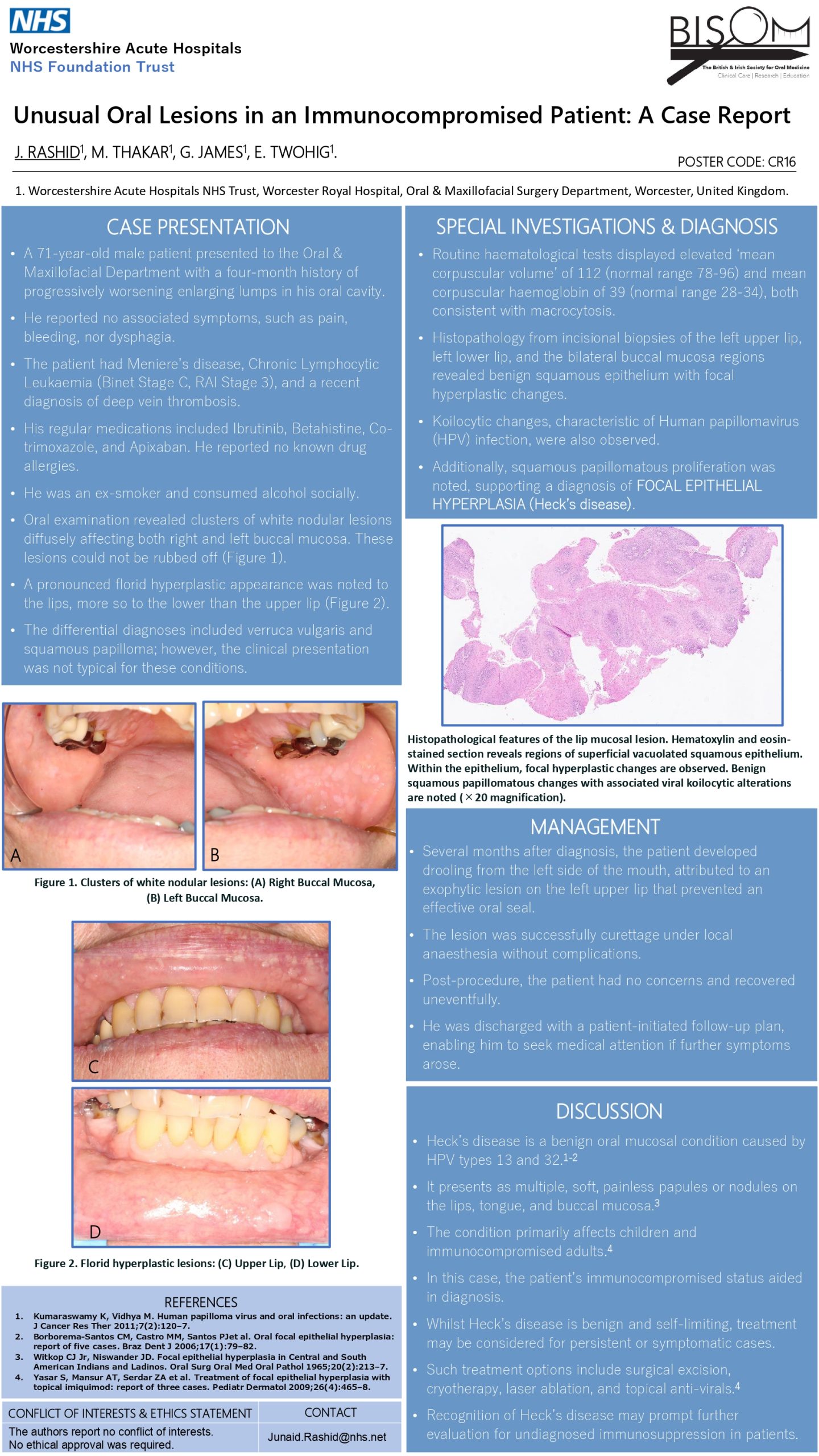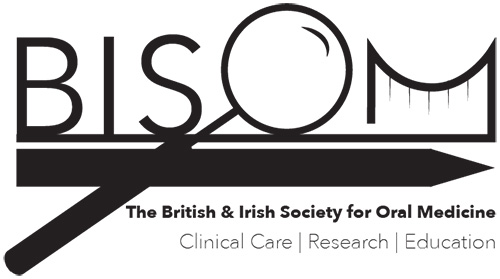Unusual Oral Lesions in an Immunocompromised Patient A Case Report
CR16
Dr Junaid Rashid
Dr Meera Thakar, Mr Graham James, Dr Eoin Twohig
Introduction
Heck’s disease, also known as focal epithelial hyperplasia, is a rare, benign condition caused by human papillomavirus (HPV) types 13 and 32. It predominantly affects the oral mucosa, manifesting as multiple soft, painless papules or nodules on the lips, tongue, and buccal mucosa. Heck’s disease is most commonly observed in children and immunocompromised individuals. This report presents a unique case of Heck’s disease.
Case Report
A 71-year-old male presented to the Maxillofacial Department with a four-month history of progressively enlarging, asymptomatic lumps in his oral cavity. His medical history included Meniere’s disease and chronic lymphocytic leukaemia (Binet stage C, RAI stage 3). His regular medications included Ibrutinib, Betahistine and Co-trimoxazole, with no known drug allergies. He was an ex-smoker and consumed alcohol socially.
Clinical examination revealed clusters of white nodular lesions diffusely distributed across the bilateral buccal mucosa. A more pronounced florid hyperplastic appearance was noted, affecting the upper lip moreso than the lower lip. Differential diagnoses included verruca vulgaris and squamous papilloma. Histopathological analysis of biopsies taken from the upper lip, lower lip, and bilateral buccal mucosa demonstrated benign squamous epithelium with focal hyperplastic changes. Viral koilocytic and benign squamous papillomatous changes were also observed, features strongly indicative of an HPV-associated lesion.
Several months after diagnosis, the patient developed drooling from the left side of his mouth due to the lump on the left upper lip. The lesion was successfully curettaged under local anaesthesia. The patient had no concerns post-procedure and was discharged on a patient initiated follow-up in case he developed further symptoms.
Conclusion
Intraoral mucosal manifestations of Heck’s disease are rarely observed in older adults. As this patient was known to be immunocompromised, the diagnostic challenge was lessened. However, recognising Heck’s disease as a differential is important, as it may prompt further investigations for undiagnosed immunosuppression.

